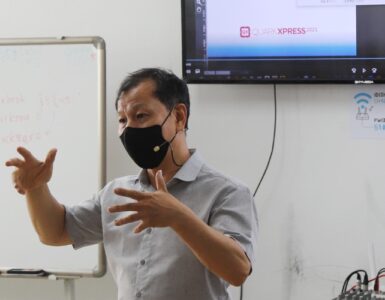When we think of a typical college student, it’s easy to picture an 18-year-old fresh out of high school, living on a campus and relying on parental support. However, over the past decade, the face of college students has dramatically shifted. With more adults returning to school to reskill or pursue further education, the rise of non-traditional students has become a game changer in higher education. In fact, non-traditional students now make up a significant portion of the student body, and this trend is expected to continue growing. Let’s take a closer look at why this shift is happening and how it’s reshaping the educational landscape.
From Tradition to Transformation
The term “non-traditional student” has evolved over time. In the past, a traditional student was simply an 18- to 24-year-old who attended college directly after high school. However, this narrow view has expanded, especially in light of shifting societal and economic factors. Today, non-traditional students include people of all ages—working professionals, parents, retirees, and others—who return to school for a variety of reasons. This shift reflects broader changes in society, where continuing education is no longer reserved for the young but is seen as a vital tool for people in all stages of life to stay competitive in the job market.
Economic Pressures Drive the Need for Education
The Great Recession of 2008 marked a pivotal moment in the education landscape. As businesses took a significant hit, millions of jobs were lost—many of which were held by people without formal education beyond high school. This stark reality highlighted the importance of higher education for long-term career success. People began to recognize that continuing their education, whether through a degree or specialized certifications, was essential for career stability. In response, non-traditional students began enrolling in colleges and universities in greater numbers, seeking to improve their skills and qualifications for the evolving workforce.
A Changing Job Market Fuels the Shift
According to Georgetown University’s Center on Education and the Workforce, around 80% of the jobs lost during the recession were held by individuals who didn’t have a post-secondary education. This statistic proved a wake-up call for many workers, reinforcing the idea that education is key to accessing better job opportunities and career growth. As the job market grew more competitive, workers recognized the need to adapt and upskill. Non-traditional students, including those who were working full-time, raising children, or balancing other life responsibilities, made the decision to return to school to ensure they stayed competitive in the workforce.
Institutions Adapt to Meet the Needs of Non-Traditional Students
As non-traditional students began to fill the halls of colleges and universities, institutions responded by rethinking how they could better support these learners. Flexible class schedules, online programs, and programs tailored to the needs of adult learners became more prevalent. Universities also began offering more career-oriented courses and certifications, recognizing that many non-traditional students were interested in specific skills that could directly translate to career advancement. This shift made higher education more accessible and appealing to a broader range of people with varying commitments.
Online Education and MicroMasters Programs Lead the Way
One of the biggest drivers of non-traditional students’ growth has been the rise of online education. With the flexibility to learn from anywhere and at any time, online programs have become a game changer for adults with busy schedules. MicroMasters programs—online, graduate-level courses focused on specialized skills—have also gained traction. These programs offer affordable, bite-sized chunks of education that help learners gain expertise in a specific area without committing to a full degree. As a result, more people are taking advantage of these opportunities, contributing to the continued rise in non-traditional enrollment.
Conclusion
The growing presence of non-traditional students in higher education is a testament to the changing landscape of learning and the workforce. With the need to reskill, upskill, and stay relevant in an ever-evolving job market, adults from all walks of life are returning to school to meet the demands of their careers. As educational institutions continue to adapt to these needs, non-traditional students will only continue to grow in numbers, making education more diverse and accessible than ever before.








